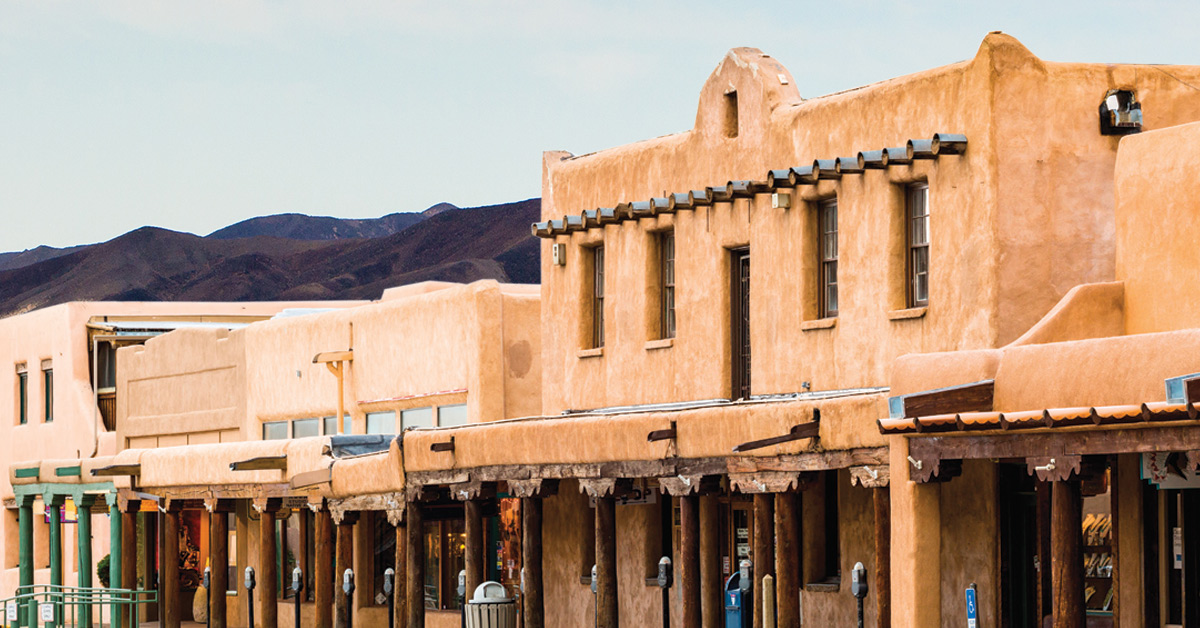The nationwide outbreak of COVID-19 left the Southwest Region economies of Utah, Nevada, Arizona and New Mexico particularly vulnerable. Early this past April, the crisis had stopped nearly all interstate travel and tourism, leaving hotels and restaurants closed.
The Las Vegas Strip and tourist attractions across the Southwest were shuttered in March of this year. Plummeting oil prices also threatened New Mexico’s important oil and gas industry. Unemployment rates rose sharply this past March in Nevada, Arizona and New Mexico, according to preliminary estimates from the U.S. Bureau of Labor Statistics.

The recent past, however, suggests these states are well-positioned for a recovery. All but New Mexico outperformed the annualized U.S. gross domestic product growth rate of 2.1% as of fourth-quarter 2019, with yearly growth ranging from 2% in New Mexico to 3.4% in Utah. The major cities in this region were among the fastest growing in the U.S.
Phoenix and Las Vegas draw thousands of new residents each year from Los Angeles and other parts of California. The Phoenix and Las Vegas metro areas were ranked No. 1 and No. 8, respectively, in net population gains based on U.S. Census Bureau figures from 2013 to 2017, according to a CommercialCafe study released this past October.
Other major cities in the Southwest include Tucson, Arizona; Albuquerque, New Mexico; and Salt Lake City. The Sun Belt states of Arizona and New Mexico, in particular, have long been popular with retirees and vacation-home owners because of the warmer weather and relatively affordable real estate and taxes. A 2019 United Van Lines survey ranked New Mexico as No. 1 and Arizona as No. 3 among states for retirement popularity.
Arizona’s economy is dominated by Maricopa County and the Phoenix metro area with its population of 4.5 million. Phoenix is home base to health care conglomerate Banner Health and pet supply company PetSmart. The national headquarters of convenience-store chain Circle K is east of Phoenix in neighboring Tempe. The Greater Phoenix area also is a tech hub, and more than 52,000 of the state’s jobs are directly involved in the aerospace and defense industries, according to the Arizona Commerce Authority.
Nevada’s important gaming and tourism industry was closed down by COVID-19 this past March, but history suggests that gaming revenues and tourism will eventually bounce back. In fiscal year 2018, tourism directly employed 282,600 workers across the state, the Nevada Resort Association reported. Nevada also is known for its gold, copper and silver mines.
New Mexico ranked third after Texas and North Dakota in crude-oil production in 2019, the U.S. Energy Information Administration reported. New Mexico is a major producer of potash (potassium-rich salts) and has significant uranium resources.
Utah has consistently had one of the fastest- growing economies in the U.S. The Salt Lake City area has become a hub for cloud-computing tech companies and bioengineering, developing districts around the city known as Silicon Slopes and Bionic Valley.
Phoenix Office Market
Prior to the COVID-19 outbreak, the Phoenix office market was performing solidly. As of fourth-quarter 2019, the vacancy rate dropped to 14.3%, the lowest level since fourth-quarter 2007, Cushman & Wakefield reported.
Expanding companies absorbed 1.2 million square feet of office space in the past fourth quarter and a total of 2.8 million square feet in 2019. Labor statistics indicated that the Phoenix metro area added 10,500 office-sector jobs last year.
Overall office rents in metro-area Phoenix rose by $1.27 per square foot over the year to end 2019 at $27.10 per square foot. Phoenix also was expecting a glut of new office space to open this year. At the end of 2019, more than 1.7 million square feet of additional space was under construction.

Focus: Mining
The Southwest Region is mineral rich and mining is an important industry in all four states. Arizona’s copper mines produce about 65% of all U.S. copper and the state also is a source of gold, lime and uranium. In Nevada, more than 12,000 people are directly employed in mining, primarily in gold, silver and copper production.
Utah, meanwhile, ranked 12th among all states in coal production in 2018, producing an estimated 13.6 million tons. And in 2019, New Mexico surpassed Alaska, Oklahoma and California in crude-oil production, making it the third-largest oil-producing state, The New York Times reported.
What the locals say
“If Maricopa County is not leading the nation in population growth, it is usually in the top three. So, that has contributed a lot to the state and the county. What has been happening with the population that is moving to the Phoenix area is that it is not retirees so much anymore. Lots of diversified employment is happening here. Companies that can’t retain good engineers in the Bay Area have moved here. So, that is all positive, and is why we have experienced such good growth and economic opportunities. If you look back 20 years ago, Arizona’s economy was dependent on two things: tourism and construction.”

Rodd Wagner
Senior underwriter, Seattle Funding Group
3 Cities to Watch
Salt Lake City

Founded in 1847 by the Latter-day Saints’ church leader Brigham Young, Salt Lake City is the state capital and largest city in Utah. Cushman & Wakefield noted that the tech sector accounted for two-thirds of the city’s major commercial- property leases in 2018. In terms of the tech industry’s local-market share of leases, Salt Lake City was second only to Silicon Valley that year, the Deseret News reported.
Tucson

Arizona’s second-largest city has a population of about 550,000 and a metro-population close to 1 million, according to the World Population Review. The city’s tourism industry, however, was devastated by the coronavirus outbreak after a promising first two months of 2020. Room-occupancy rates plummeted in mid-March at the hotels that remained open, while two tribal casinos temporarily closed at the beginning of the outbreak.
Albuquerque

New Mexico’s largest city is at the center of a tech corridor located along the Rio Grande River. It is the 32nd-largest city in the U.S. with a population of 560,000 and has 903,000 metro-area residents, the World Population Review reported. According to Business Facilities’ 2019 Metro Rankings Report, Albuquerque ranked No. 9 among large cities for its economic-growth potential.
Sources: Albuquerque Journal, Arizona Commerce Authority, Arizona Daily Star, AZ Business Magazine, CommercialCafe, Deseret News, Nevada Governor’s Office of Economic Development, New Mexico Economic Development Department, The New York Times, United Van Lines, University of Arizona, U.S. Bureau of Economic Analysis, U.S. Census Bureau, U.S. Department of Agriculture, U.S. Department of Labor, U.S. Energy Information Administration, U.S. News & World Report, World Population Review
Author
-

Victor Whitman is a contributing writer for Scotsman Guide and a former editor of the publication’s commercial magazine.
View all posts






